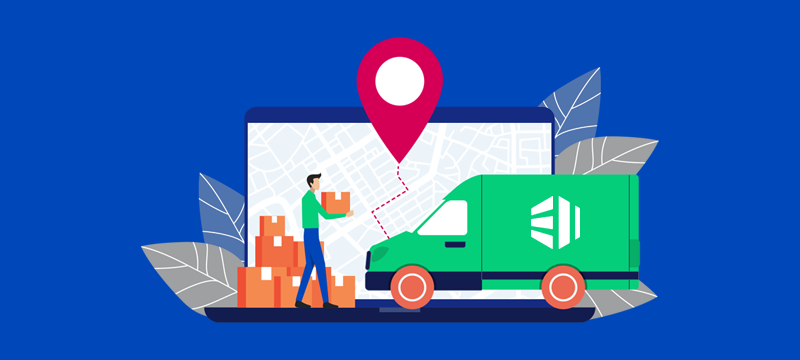The growth in online shopping has resulted in a proliferation of parcel deliveries. In the UK, almost 4 billion items are shipped every year, earning delivery companies a combined revenue of £14 billion.
While there are plenty of big players in the delivery market, like Royal Mail, DHL and DPD, the vast majority are small, independent firms that compete for smaller contracts and one-off jobs.
Due to increasing competition, these firms are now creating more sophisticated websites to attract new customers. If you are one of these firms, here are six features that can help your delivery company’s website be more successful.
- Content that answers questions
When customers are looking for a delivery service, they will have questions that they want answering. They’ll want to know where you collect from and deliver to, what types of items you collect and those which you don’t, whether you collect and deliver doorstep to doorstep or if you will take items into people’s homes, and whether you are a one-person or two-person team.
They may also want to know about the hours you work, whether items are insured, how you protect items from breakage, and how you calculate your charges. In order to secure more deliveries, it is important that the content of your website answers as many of your customers’ questions as possible.
- Mobile-friendly website
Many people looking for a delivery company will start their search on a mobile phone. For this reason, it is important that your website is designed to display correctly on a small screen. If it isn’t, much of the content will be inaccessible.
The writing might be so small that no one can read it and any interactive features, like forms or buttons, might be too small and close together to be used properly. If this happens, you are likely to lose a great deal of business. To prevent this from happening, make sure your website is built using a responsive theme or template. A responsive theme automatically reconfigures your website’s layout so that it displays properly on different types of screens, including computers, smartphones and tablets.
- Customer contact form
Enquiries can come at any time of the day, sometimes when you have finished work and others while you’re driving down the motorway. This means you might not be able to respond to them and could miss out on bookings. Adding a contact form to your website can prevent these opportunities from passing you by, as people can send you their contact information and details of what they want to be delivered, enabling you to get back to them as soon as you can.
- Pricing calculator and booking form
A pricing or a cost calculator is a website tool that you can install using a plugin or add-on and then configure for your own services. Using a calculator tool, users could input information, such as the weight and volume of their item, its value, the distance it was travelling and so forth.
Using your pricing structure, it could then automatically calculate the quote. Its benefit is that customers can find out how much it would cost to send an item using your business without having to call you. Even more beneficial would be to use a tool that not only calculates a quote, but which then lets customers book a collection and pay for the service.
In this way, your delivery company would be open for business 24 hours a day and could take new bookings while you were on the road and after you’d finished work for the day. This would need to be linked to a computerised delivery schedule and a payment gateway.
- Social proof
While everyone has heard of the big delivery companies, most small companies remain unknown entities for new customers and that uncertainty can be a barrier to them making a booking. One of the best ways to convince them that you are a reliable business that provides great service is to let them see what your past customers think about you.
You can do this by allowing customers to rate and review you on sites like Google, Facebook and Trustpilot and then embed those ratings into your own site for visitors to see. This social proof can be invaluable in helping customers decide to choose your services.
- A faster website
In today’s high-speed world, a slow-loading website will quickly get abandoned by internet users. Indeed, even a one-second delay in a website’s loading time is said to reduce conversion rates by about 7%. What’s more, slow-loading sites also perform less well in search engine results and thus get fewer visitors.
The most important factor that affects your loading time is the quality of your web hosting. Look for a web host that provides high-performance hosting with Intel Xeon processors and blisteringly fast SSD drives. If you don’t have a lot of technical experience running a website, make sure you choose a host that also provides 24/7 technical support, and which defends your site against hacking and malware.
Conclusion
With increasing competition and the rising costs of running a delivery company, a website has become a crucial tool for attracting much-needed new customers. Hopefully, the features we have mentioned here will help your delivery service company to be even more successful. For fast, reliable and cost-effective web hosting, check out our cloud-powered cPanel Web Hosting Plans.


